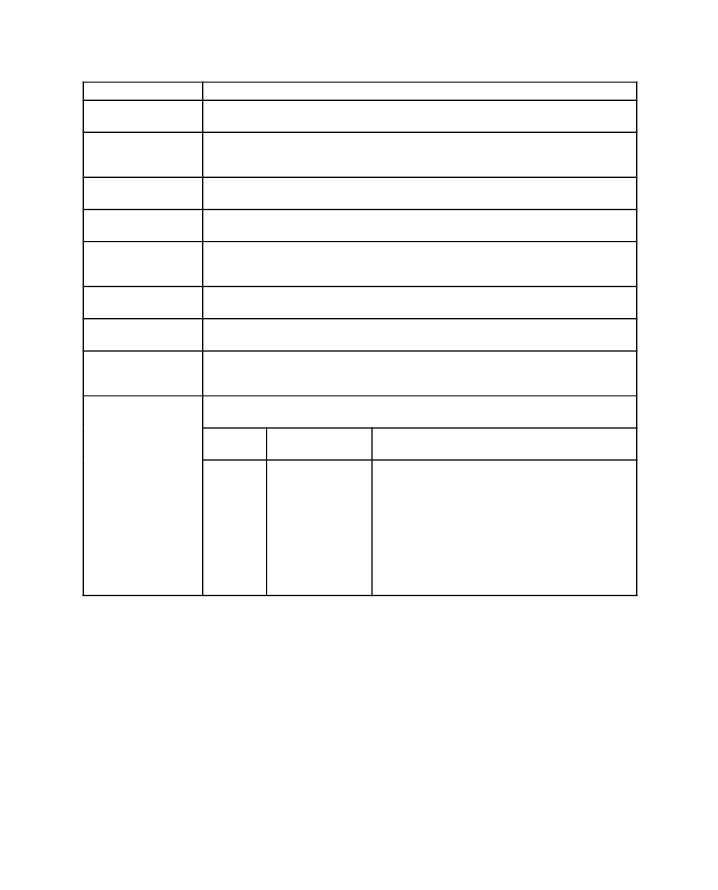- 您現(xiàn)在的位置:買(mǎi)賣(mài)IC網(wǎng) > PDF目錄365967 > TSB12LV26-EP 672-pin FineLine BGA PDF資料下載
參數(shù)資料
| 型號(hào): | TSB12LV26-EP |
| 英文描述: | 672-pin FineLine BGA |
| 中文描述: | 軍事增強(qiáng)塑料的OHCI -山貓基于PCI的1394主控制器 |
| 文件頁(yè)數(shù): | 80/106頁(yè) |
| 文件大小: | 605K |
| 代理商: | TSB12LV26-EP |
第1頁(yè)第2頁(yè)第3頁(yè)第4頁(yè)第5頁(yè)第6頁(yè)第7頁(yè)第8頁(yè)第9頁(yè)第10頁(yè)第11頁(yè)第12頁(yè)第13頁(yè)第14頁(yè)第15頁(yè)第16頁(yè)第17頁(yè)第18頁(yè)第19頁(yè)第20頁(yè)第21頁(yè)第22頁(yè)第23頁(yè)第24頁(yè)第25頁(yè)第26頁(yè)第27頁(yè)第28頁(yè)第29頁(yè)第30頁(yè)第31頁(yè)第32頁(yè)第33頁(yè)第34頁(yè)第35頁(yè)第36頁(yè)第37頁(yè)第38頁(yè)第39頁(yè)第40頁(yè)第41頁(yè)第42頁(yè)第43頁(yè)第44頁(yè)第45頁(yè)第46頁(yè)第47頁(yè)第48頁(yè)第49頁(yè)第50頁(yè)第51頁(yè)第52頁(yè)第53頁(yè)第54頁(yè)第55頁(yè)第56頁(yè)第57頁(yè)第58頁(yè)第59頁(yè)第60頁(yè)第61頁(yè)第62頁(yè)第63頁(yè)第64頁(yè)第65頁(yè)第66頁(yè)第67頁(yè)第68頁(yè)第69頁(yè)第70頁(yè)第71頁(yè)第72頁(yè)第73頁(yè)第74頁(yè)第75頁(yè)第76頁(yè)第77頁(yè)第78頁(yè)第79頁(yè)當(dāng)前第80頁(yè)第81頁(yè)第82頁(yè)第83頁(yè)第84頁(yè)第85頁(yè)第86頁(yè)第87頁(yè)第88頁(yè)第89頁(yè)第90頁(yè)第91頁(yè)第92頁(yè)第93頁(yè)第94頁(yè)第95頁(yè)第96頁(yè)第97頁(yè)第98頁(yè)第99頁(yè)第100頁(yè)第101頁(yè)第102頁(yè)第103頁(yè)第104頁(yè)第105頁(yè)第106頁(yè)

7
–
2
Table 7
–
1. Quadlet-Transmit Format Functions
FIELD NAME
DESCRIPTION
spd
The spd field indicates the speed at which the current packet is to be sent. 00 = 100 Mb/s,
01 = 200 Mb/s, and 10 = 400 Mb/s, and 11 is undefined for this implementation.
tLabel
The tLabel field is the transaction label, which is a unique tag for each outstanding transaction
between two nodes. This field is used to pair up a response packet with its corresponding
request packet.
rt
The rt field is the retry code for the current packet is: 00 = new, 01 = retry_X, 10 = retryA, and
11 = retryB.
tCode
The tCode field is the transaction code for the current packet (see Table 6
–
10 of IEEE
–
1394
standard).
priority
The priority field contains the priority level for the current packet. For cable implementation,
the value of the bits must be zero (for backplane implementation, see clause 5.4.1.3 and
5.4.2.1 of the IEEE
–
1394 standard).
destinationID
The destinationID field is the concatenation of the 10-bit bus number and the 6-bit node
number that forms the destination node address of the current packet.
destination OffsetHigh,
destination OffsetLow
The concatenation of these two fields addresses a quadlet in the destination node address
space. This address must be quadlet aligned (modulo 4).
quadlet data
For write requests and read responses, the quadlet data field holds the data to be transferred.
For write responses and read requests, this field is not used and should not be written into the
FIFO.
rcode
Specifies the result of the read request transaction. The response codes that may be
returned to the requesting agent are defined as follows:
Response
Code
Name
Description
0
1
–
3
4
5
6
7
8-Fh
resp_complete
reserved
resp_conflict_error
resp_data_error
resp_type_error
resp_address_error
reserved
Node successfully completed requested operation
Resource conflict detected by responding agent.
Request may be retried.
Hardware error. Data not available.
Field within request packet header contains un
supported or invalid vallue.
Address location within specified node not accessible
7.1.2
The block-transmit format is shown in Figure 7
–
3 and is described in Table 7
–
2. The first quadlet contains
packet-control information. The second and third quadlets contain the 64-bit address. The first 16 bits of the
fourth quadlet contains the dataLength field. This is the number of bytes of data in the packet. The remaining
16 bits represent the extended_tCode field (see Table 6
–
11 of the IEEE
–
1394 standard for more information
on extended_tCodes). The block data, if any, follows the extended_tCode.
Block Transmit
相關(guān)PDF資料 |
PDF描述 |
|---|---|
| TSB12LV22PZP | OHCI-Lynx PCI-BASED IEEE 1394 HOST CONTROLLER |
| TSB12LV26PZ | OHCI-Lynx PCI-BASED IEEE 1394 HOST CONTROLLER |
| TSB14AA1 | FPGA (Field-Programmable Gate Array) |
| TSB14AA1I | FPGA (Field-Programmable Gate Array) |
| TSB14AA1T | FPGA (Field-Programmable Gate Array) |
相關(guān)代理商/技術(shù)參數(shù) |
參數(shù)描述 |
|---|---|
| TSB12LV26IPZT | 功能描述:1394 接口集成電路 OHCI-Lynx PCI-Based Host Controller RoHS:否 制造商:Texas Instruments 類(lèi)型:Link Layer Controller 工作電源電壓: 封裝 / 箱體:LQFP 封裝:Tray |
| TSB12LV26IPZTEP | 制造商:Texas Instruments 功能描述:1394 I-TEMP OHCI-LYNX PCI-BASED IEEE 1394 HOST CONTROLLER - Rail/Tube |
| TSB12LV26PZ | 制造商:TI 制造商全稱(chēng):Texas Instruments 功能描述:OHCI-Lynx PCI-BASED IEEE 1394 HOST CONTROLLER |
| TSB12LV26PZT | 功能描述:1394 接口集成電路 OHCI-Lynx PCI-Based Host Controller RoHS:否 制造商:Texas Instruments 類(lèi)型:Link Layer Controller 工作電源電壓: 封裝 / 箱體:LQFP 封裝:Tray |
| TSB12LV26PZTG4 | 功能描述:1394 接口集成電路 OHCI-Lynx PCI-Based IEEE1394 Host Cntrlr RoHS:否 制造商:Texas Instruments 類(lèi)型:Link Layer Controller 工作電源電壓: 封裝 / 箱體:LQFP 封裝:Tray |
發(fā)布緊急采購(gòu),3分鐘左右您將得到回復(fù)。